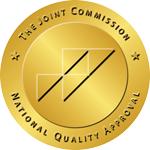How does treating multiple behaviors work in addiction treatment?
The detrimental effects of drug and alcohol abuse are familiar to many of us. The numbers are staggering. In 2020, almost 95,000 people died of alcohol-induced causes, and between May 2020 and April 2021, more than 100,000 died from drug overdose in the United States. As these numbers continue to rise, the need for successful treatment programs becomes even greater.
Health practitioners are constantly working to develop new ways to help those with alcohol and substance use disorder. Many programs treat drug or alcohol use independently, but often they go hand-in-hand with each other or with treatment for other mental and/or behavioral disorders. Fortunately, treatment programs are available to help those living with substance use disorder, including programs treating multiple behaviors, which are geared towards changing two or more behaviors. Many such programs have limited success, however, and a new study aims to determine why.
Multi-Behavioral Treatment Approaches
The disordered use of substances stems from a mix of biological, psychological, and social factors. It’s often seen in combination with other disorders and behaviors. The things that lead someone to use or develop an alcohol use disorder (for example, an underlying behavioral disorder, peer pressure, or genetic predisposition) may also lead them to develop problem tobacco use. Additionally, disordered use of one drug often leads to the disordered use of another one. Alcohol and drug use correlate strongly, and alcohol use is often a precursor to drug use. People who use alcohol are 35 times more likely to use cocaine and 13 times more likely to use opioids.
Because so many of these issues are interrelated, new approaches to treatment often attempt to target multiple behaviors at once. Besides recommending a reduction in alcohol and drug use, such multi-behavior treatment programs may also aim to encourage positive behaviors to help encourage an overall change in lifestyle. Common combinations include maintaining a healthy lifestyle by eating well and exercising, seeking community support, and utilizing community services.
The thinking is that things like increasing physical activity and healthy fruit and vegetable intake, in addition to decreasing hazardous drinking, will help reduce the harm associated with drug and alcohol use while also improving outlook and overall health. Multi-behavior treatment programs that address polysubstance use disorder and co-occurring disorders may also work to help teach skills and behaviors (such as monitoring drinking behaviors, monitoring thoughts, and planning for activities) that help those with drug and alcohol use disorders implement the main desired goal of reducing or eliminating drug and alcohol use.
In-Depth Examination of Treatment Approaches
While early evidence suggests that multi-behavior treatment programs can be effective, researchers still haven’t seen the upswing in positive results expected. Success rates have remained steady, rather than increasing. Meanwhile, the rates of drug-related deaths in the U.S. have tripled in the last decade, and years of research into behavioral treatment methods have not yielded significant improvements.
The new study, reported in the journal Psychology of Addictive Behaviors, analyzed 69 previously published reports of multi-behavior treatment programs addressing substance use to measure behavioral changes between the pretest and the follow-up.
Optimal Number of Treatments in a Multi-Behavioral Approach
One of the main things the study looked at was finding the best number of behaviors to target during treatment. Too few recommendations may not be stimulating enough to bring about change. On the other hand, too many can be overwhelming and become a burden.
The answer to this question is complex and depends on several things. Consider the following situations:
- In one situation, a person may drink alcohol and not crave cocaine. Here, the behaviors are independent of each other.
- In another case, however, a person may experience cocaine cravings each time he drinks alcohol, or not seek health care during periods of drug use. Therefore, alcohol use leads to drug use, which then leads to a decrease in seeking health care. In this situation, the behaviors are interdependent, and the treatment may be much more complex.
In each of these situations, treatment providers decide whether to address the behaviors separately or together. They also consider how many changes they try to make at once. The rationale is that if a behavioral change contributes to a positive outcome, then more recommendations would be better than fewer.
Does Addressing Co-Occuring Disorders In Rehab Work?
Addressing co-occurring disorders in inpatient rehab is widely recognized as an effective approach in the treatment of substance use disorders and mental health conditions. This approach, known as integrated treatment or dual diagnosis treatment, involves treating both the substance use disorder and the mental health disorder simultaneously.
Research indicates that integrated treatment can lead to improved outcomes compared to treating each disorder separately. These improved outcomes include reduced substance use, improved psychiatric symptoms and functioning, decreased hospitalization, increased housing stability, fewer arrests, and improved quality of life.
However, the effectiveness of this approach can depend on several factors, including the specific disorders being treated, the individual’s unique needs and circumstances, the quality of the treatment program, and the individual’s engagement and adherence to the treatment plan.
It’s important to note that treating co-occurring disorders can be complex and challenging, requiring a coordinated and multidisciplinary approach. Therefore, it’s crucial to choose a rehab center that has expertise in treating co-occurring disorders and can provide comprehensive, integrated care.
The evidence in this study does not support that rationale across the board. In some cases, making too many changes at once can be stressful and exhausting.
Multi-Behavioral Treatment More Successful for Substance Use
After comparing the results of 69 reports, the study concluded that multi-behavior treatments are effective at reducing substance use disorder for situations of drug use. The results do not indicate the same for alcohol use disorder. That means, when it comes to treating problem drug use, adding more recommendations generally helped. But based on their findings, alcohol use can be treated as a relatively independent problem. The data suggest alcohol intervention programs can be successful by targeting the alcohol use behavior itself. Treating alcohol by addition additional recommendations did not necessarily lead to more positive outcomes.
For drug use, however, treatment plans need to consider all the factors playing into the disordered us. This includes determining all the substances that the patient is using, as well as all the relevant behaviors that contribute to the disorder, such as lack of social support or limited access to a drug treatment program.
Overall, the evidence in this meta-analysis supports the effectiveness of multi-behavior treatment programs for the disordered use of substances. But it also indicates that multi-behavior treatment programs for alcohol use disorder show no clear advantage over treatment programs that target alcohol use alone. These findings can help us design and implement more effective treatment programs for both alcohol and substance use disorders. They can also help us clarify exactly what combination of interventions lead to successful outcomes for each disorder.


